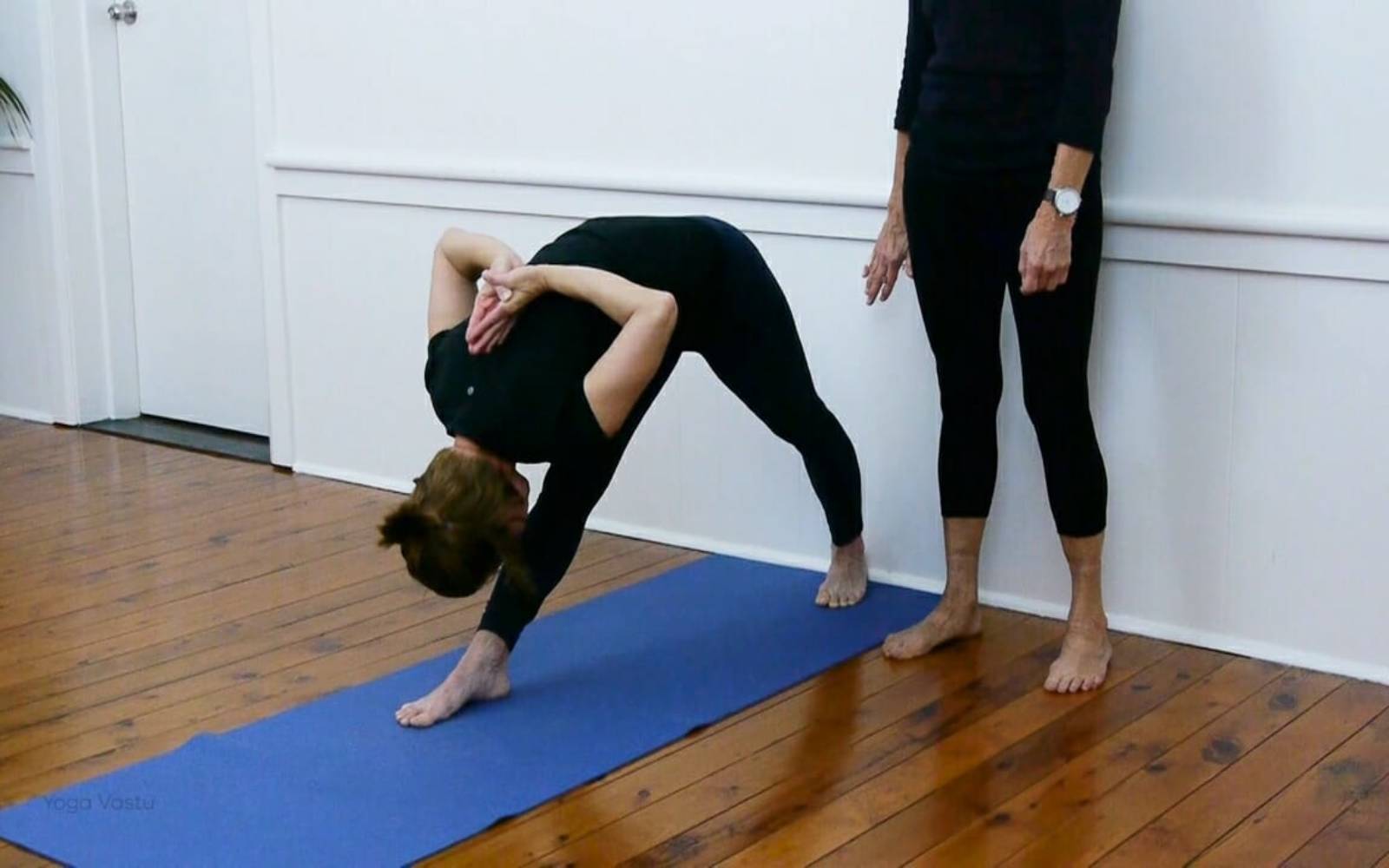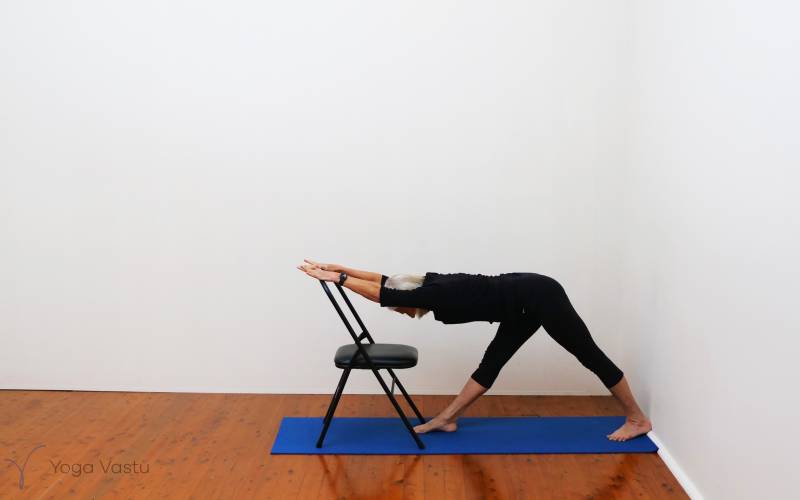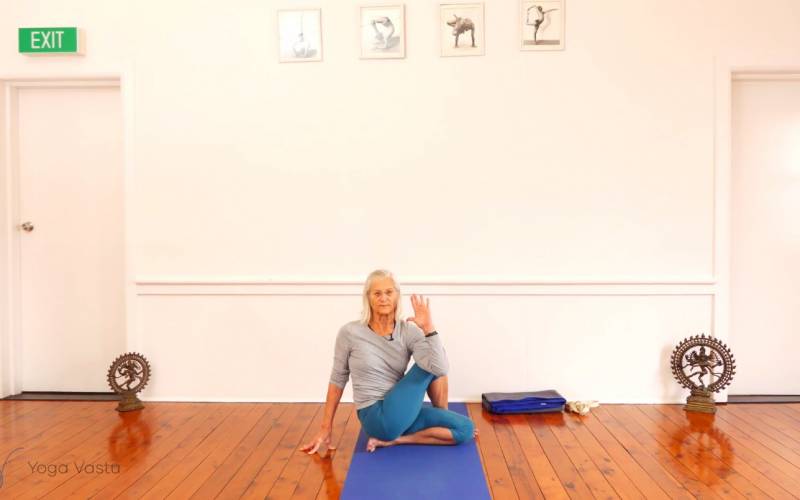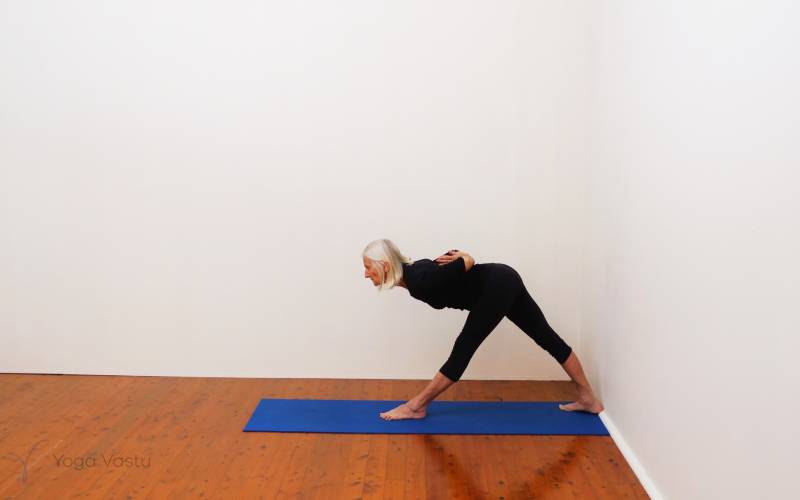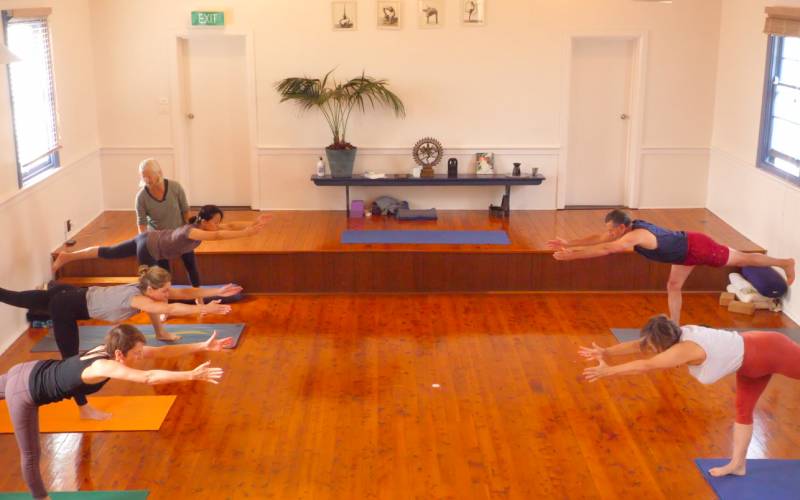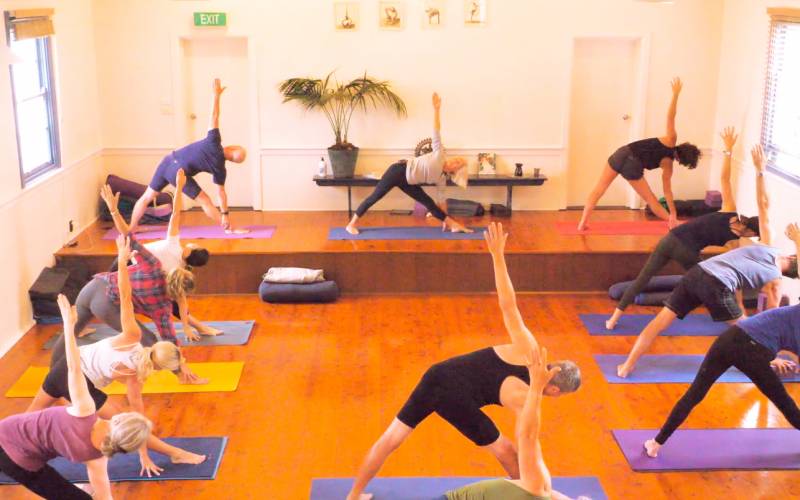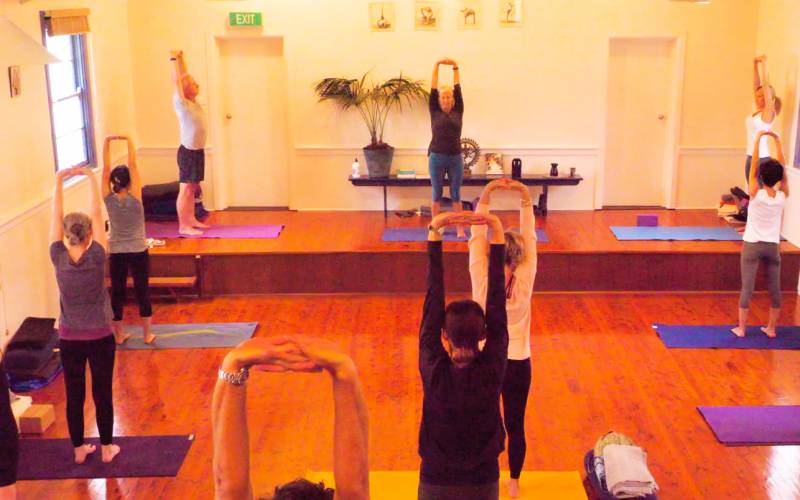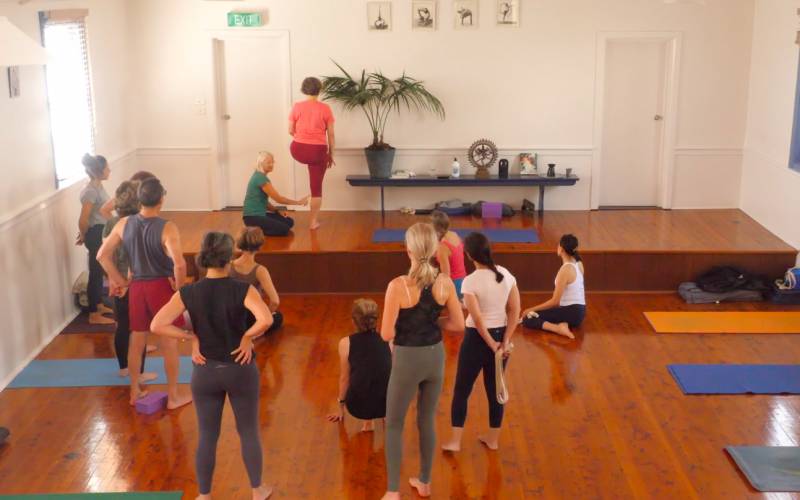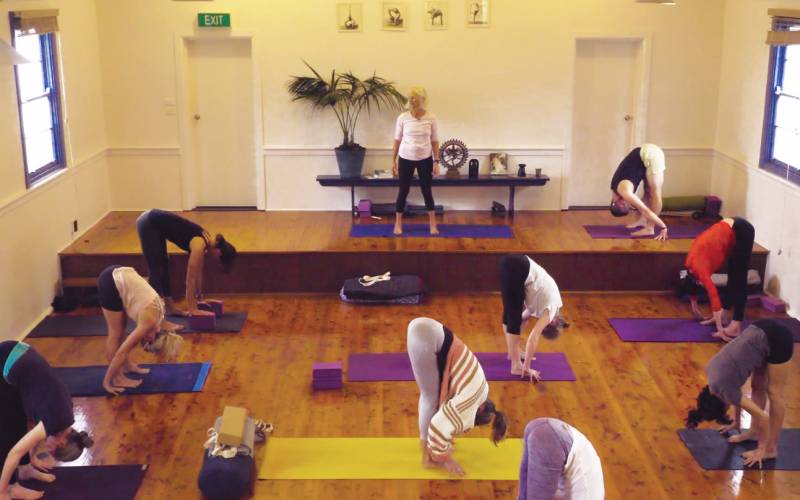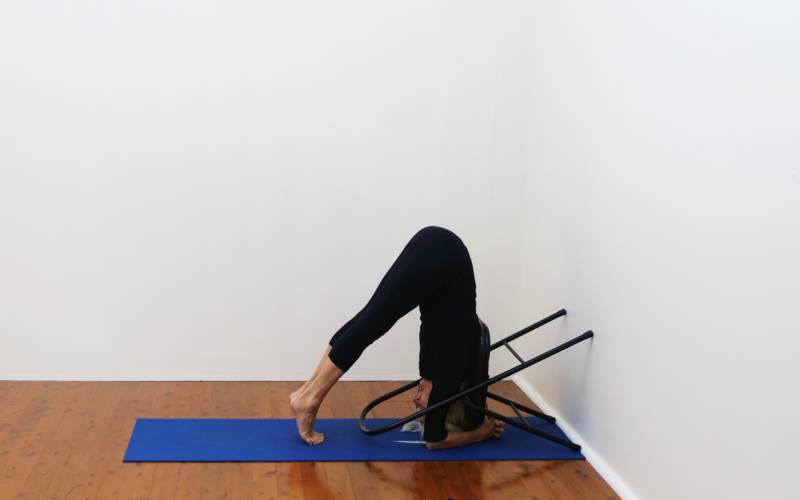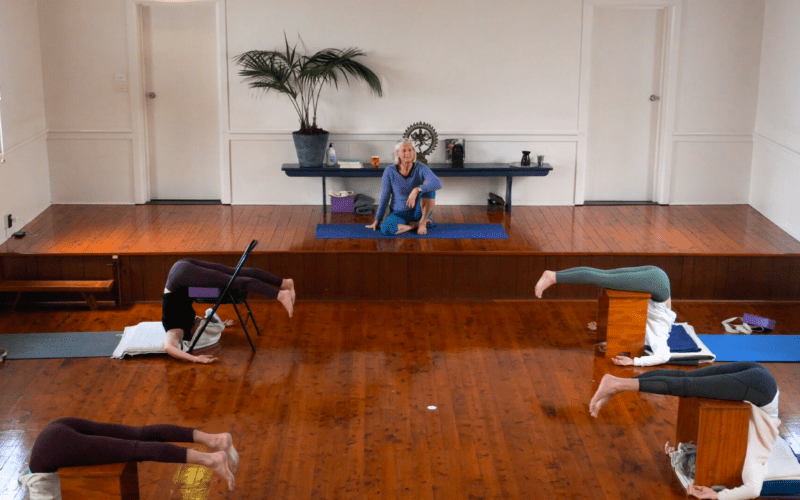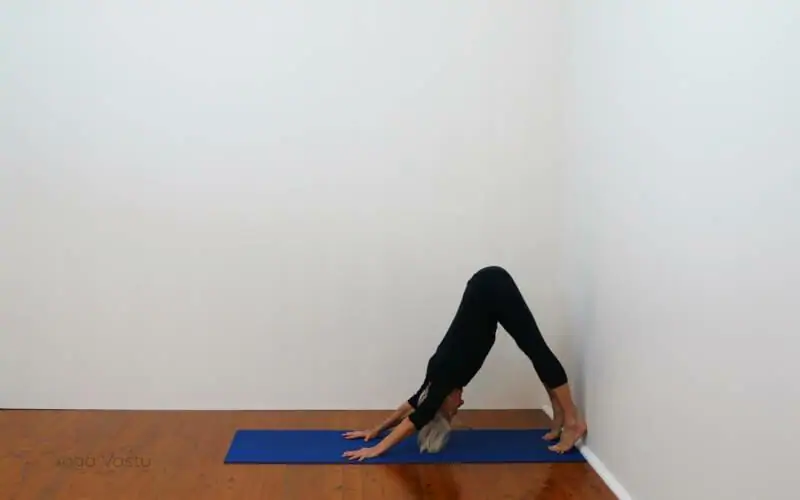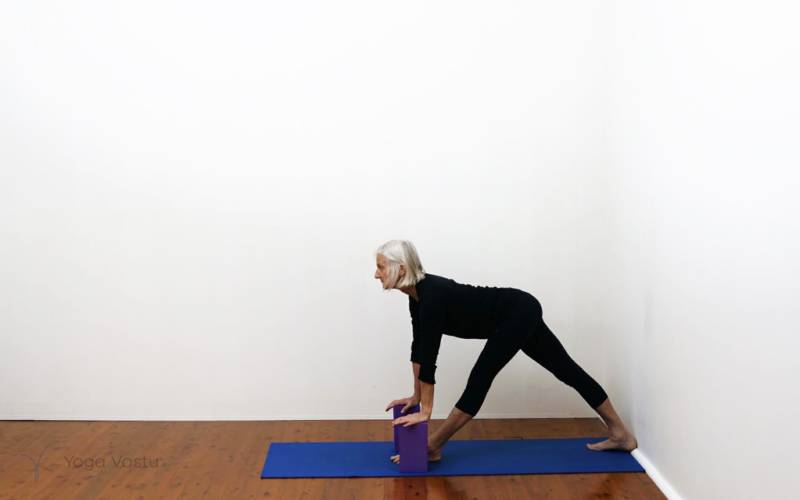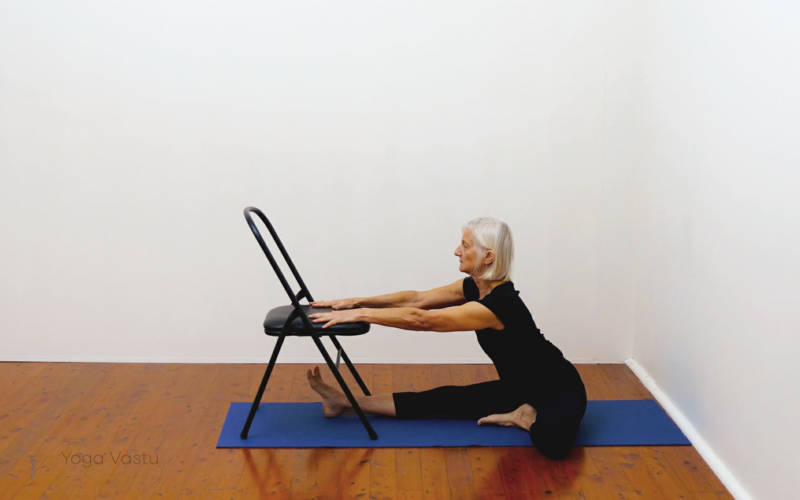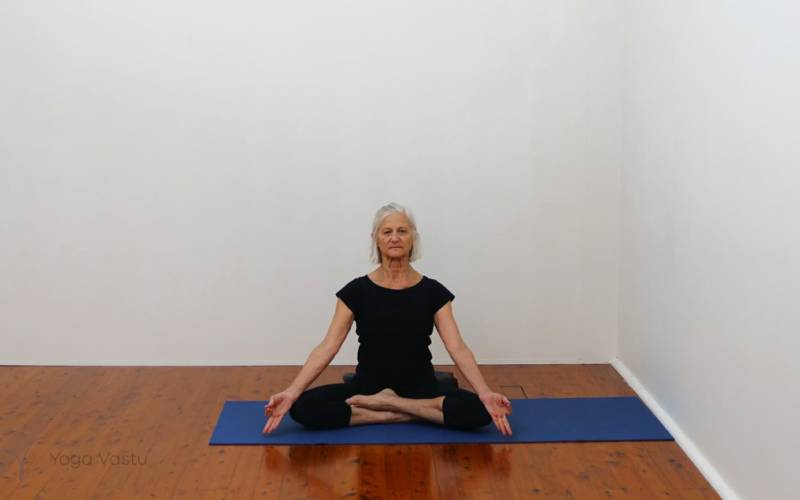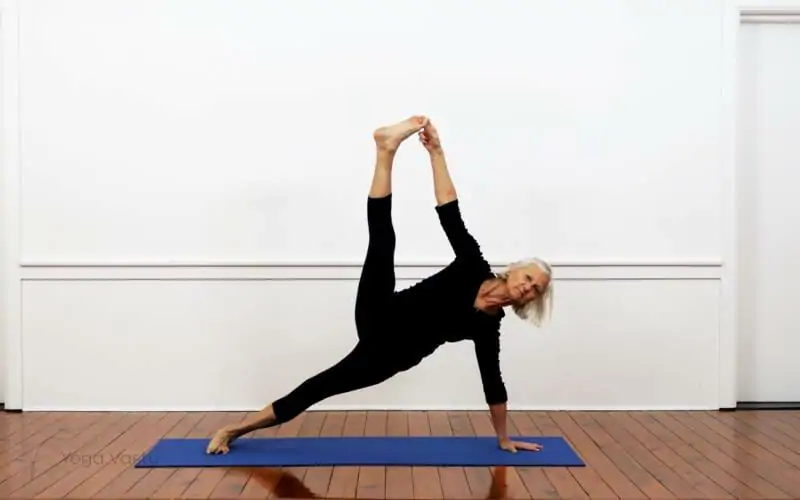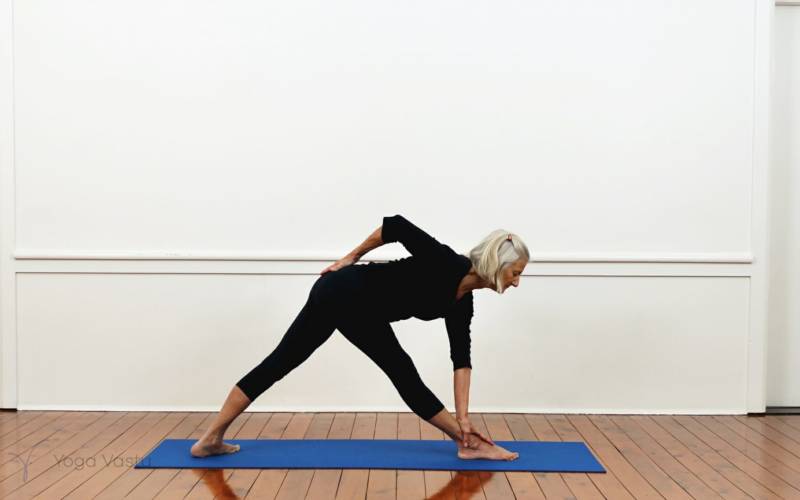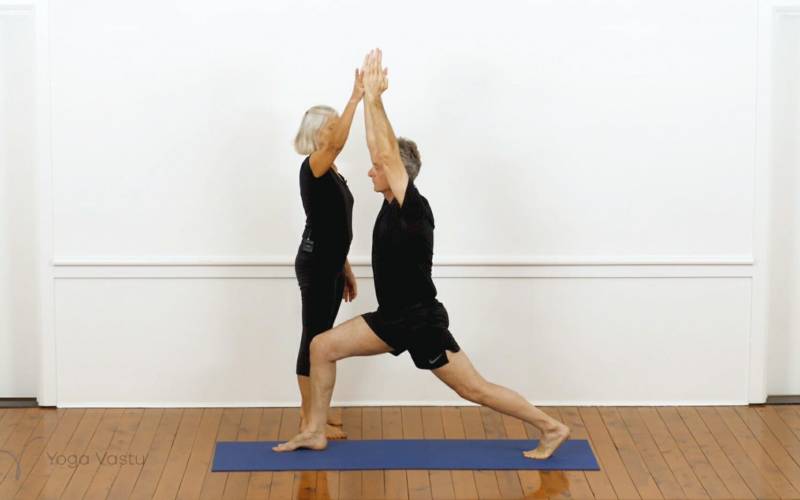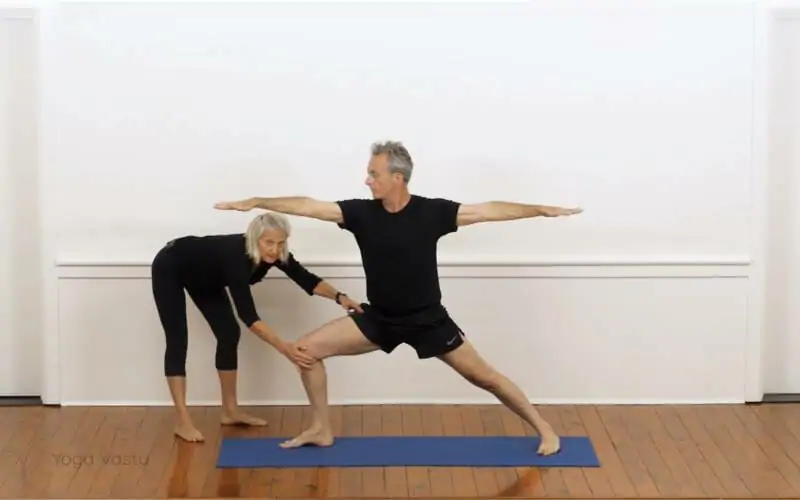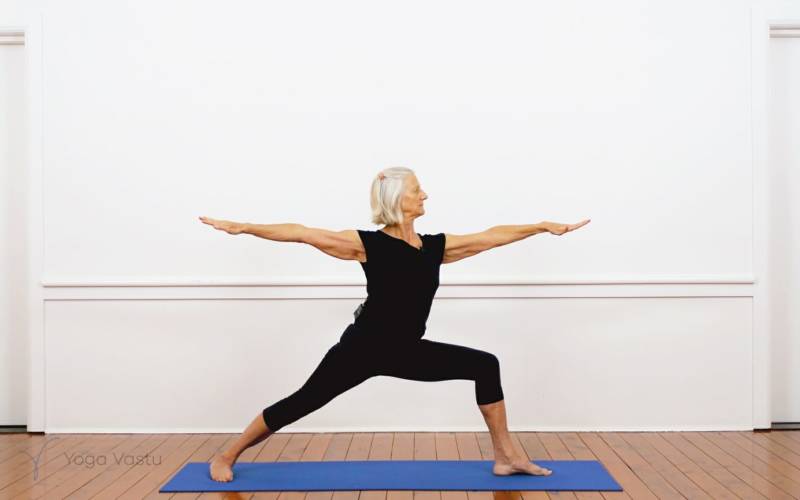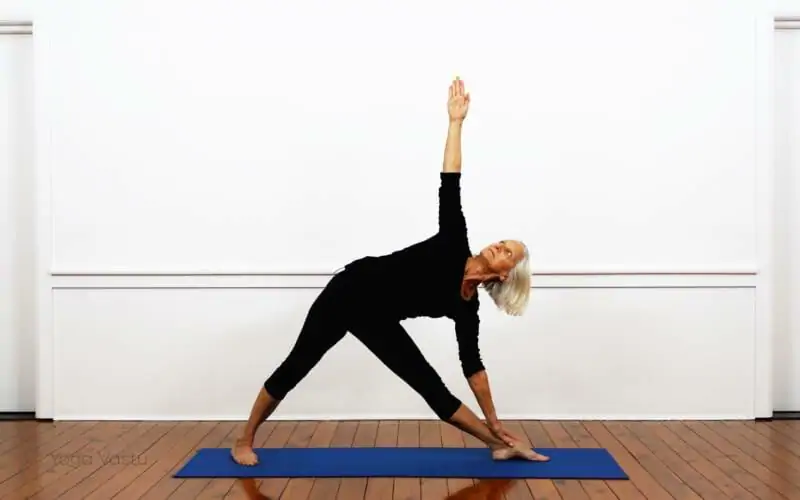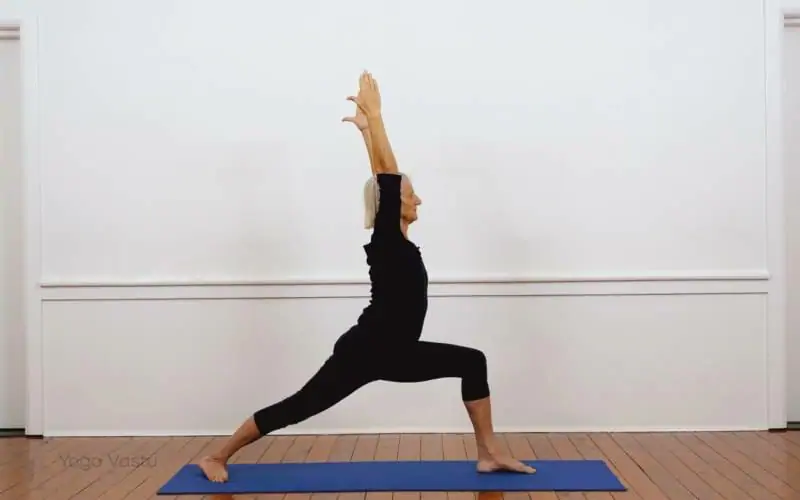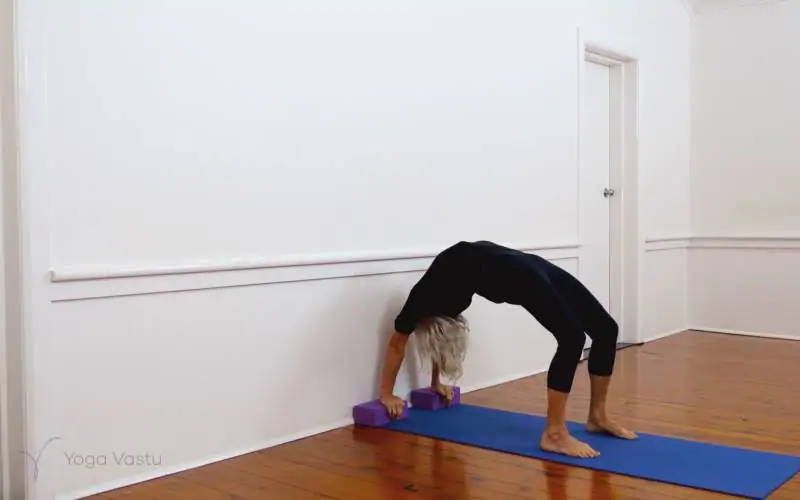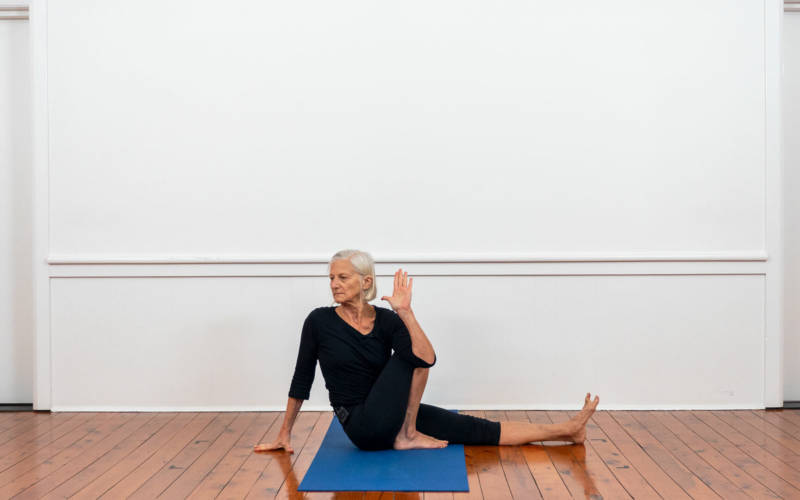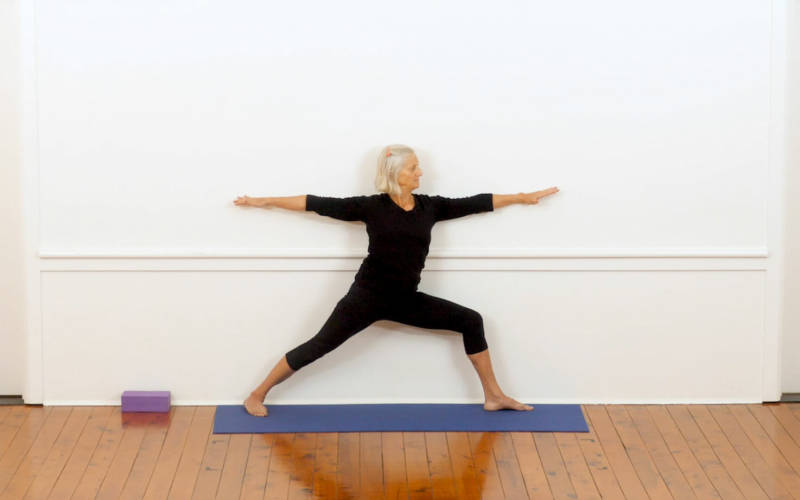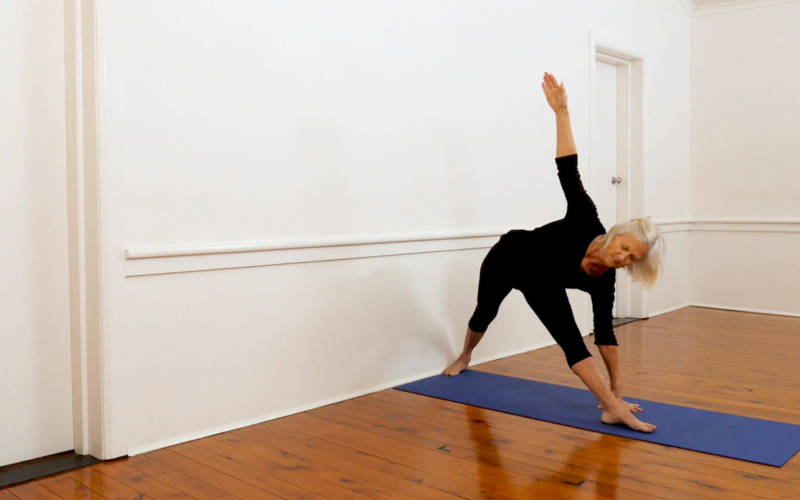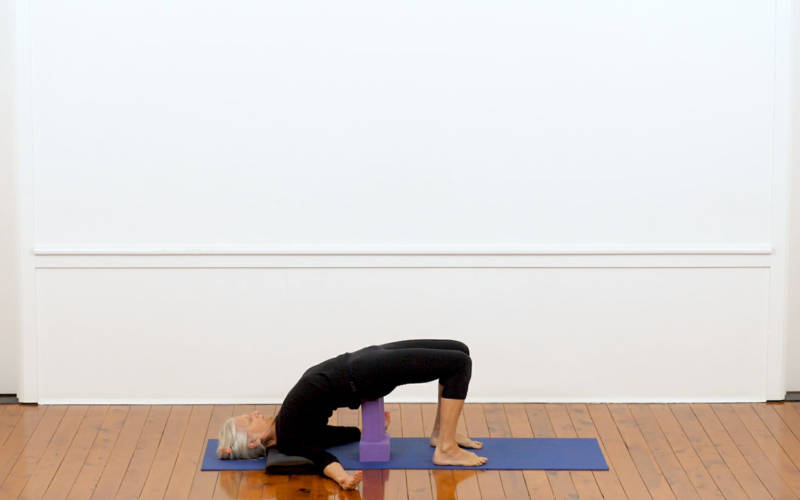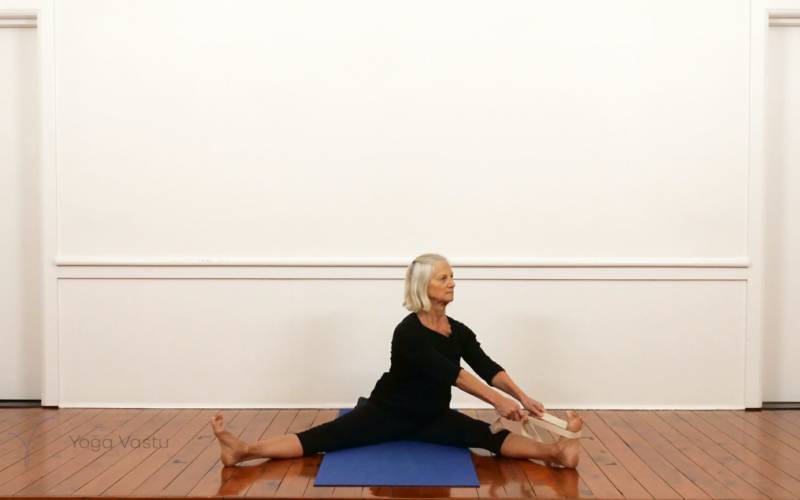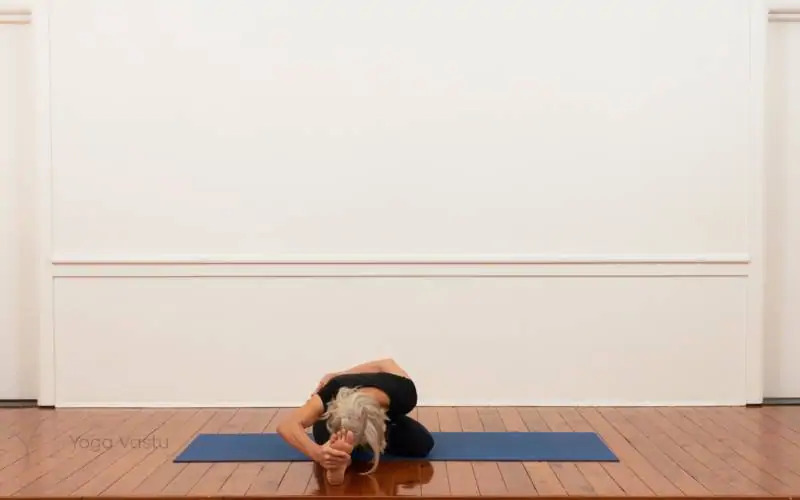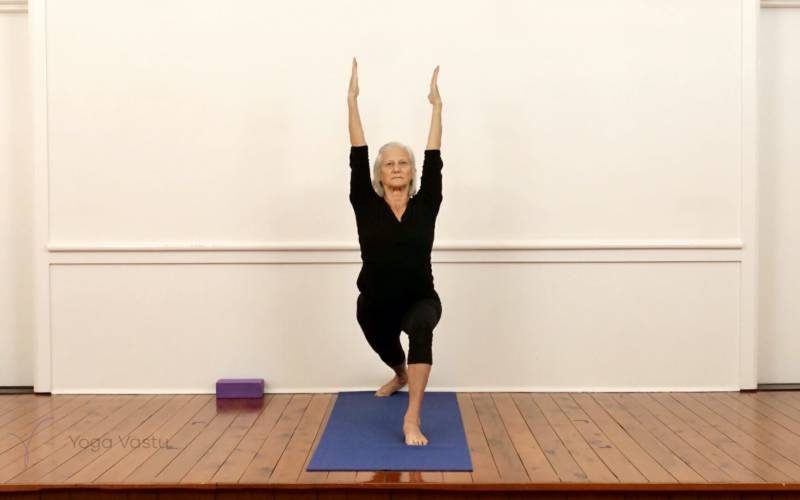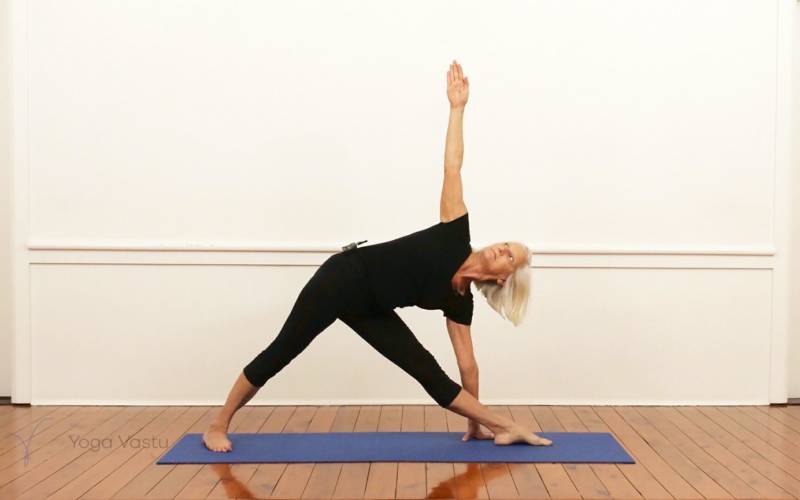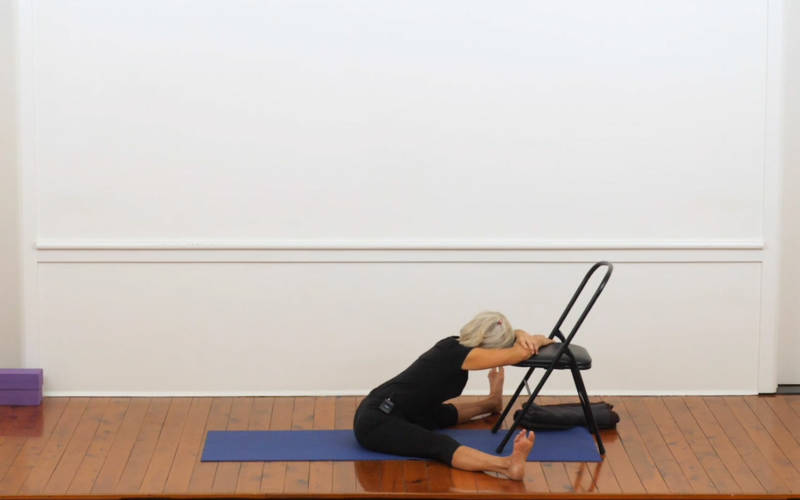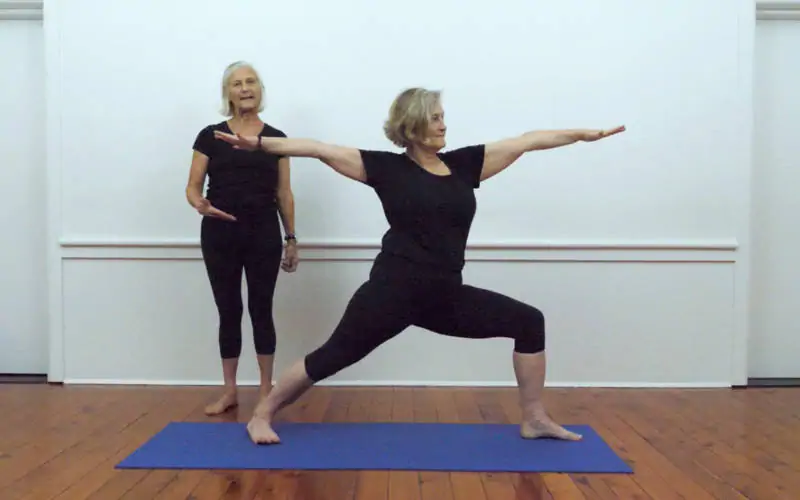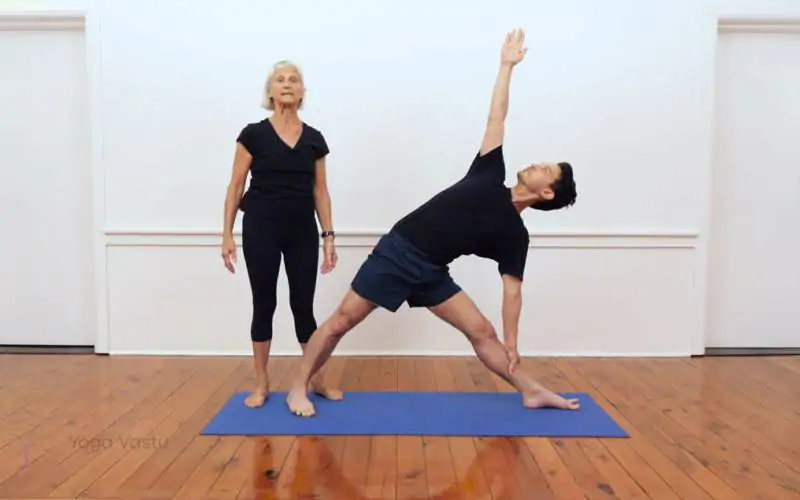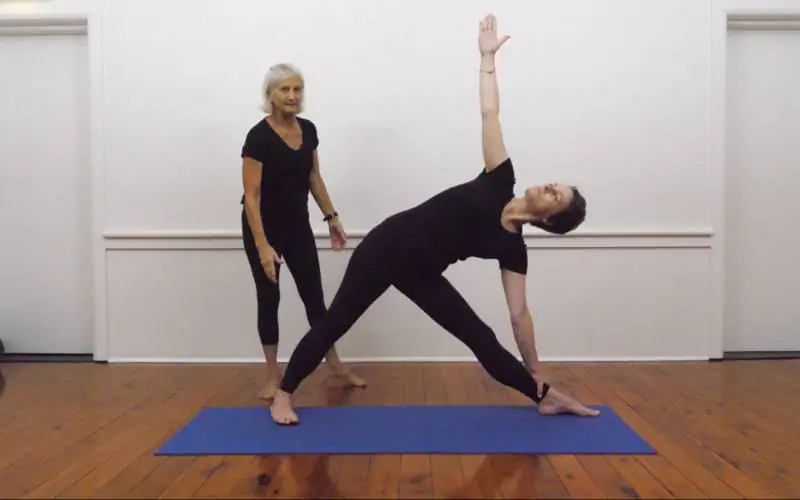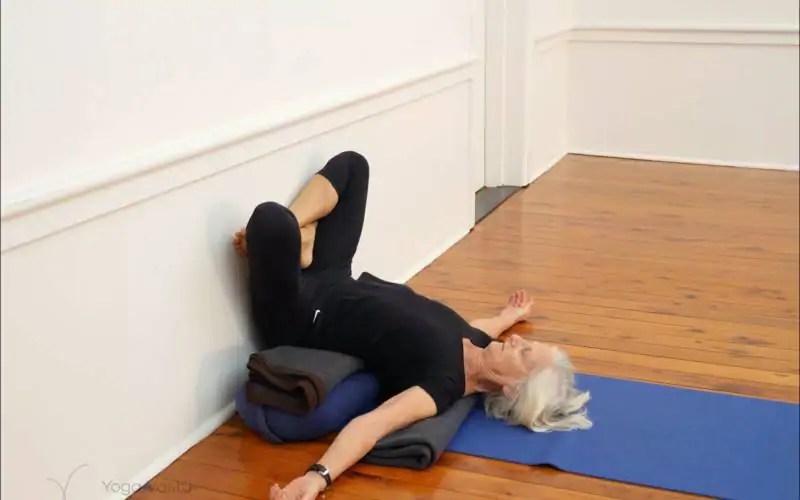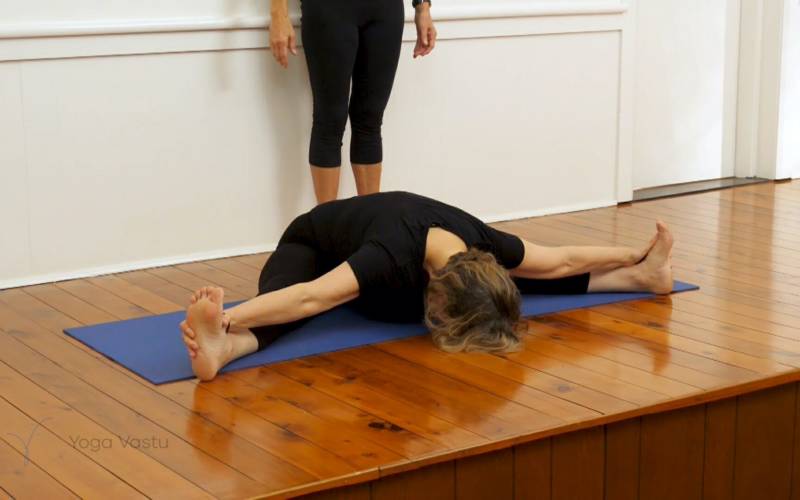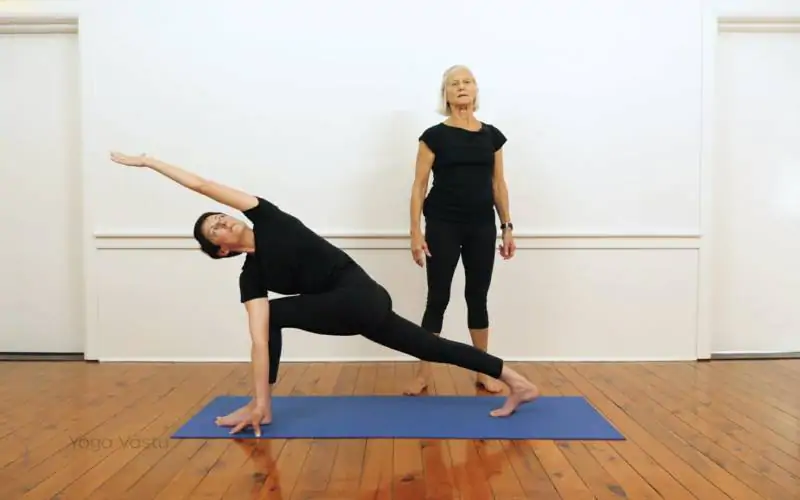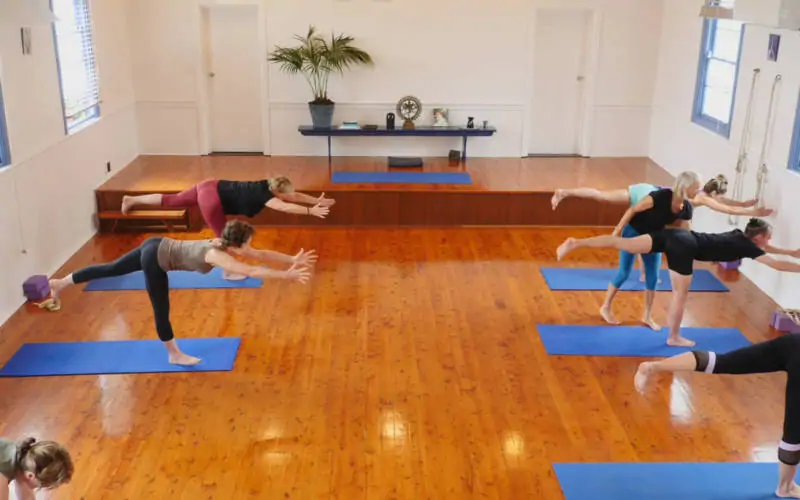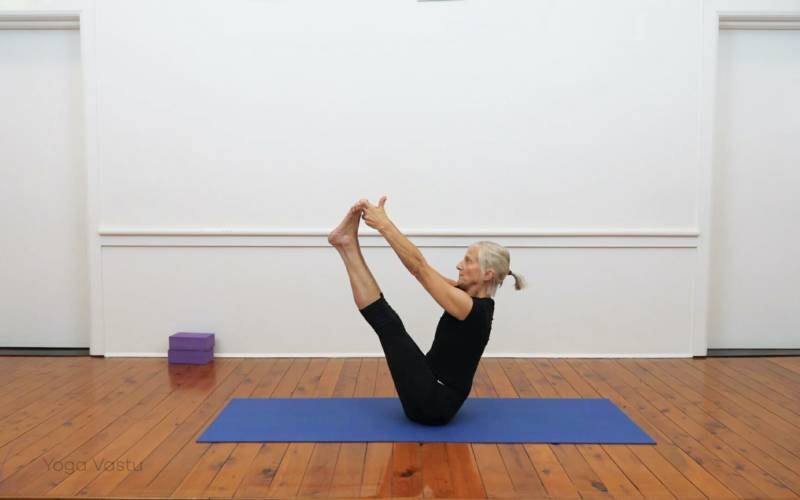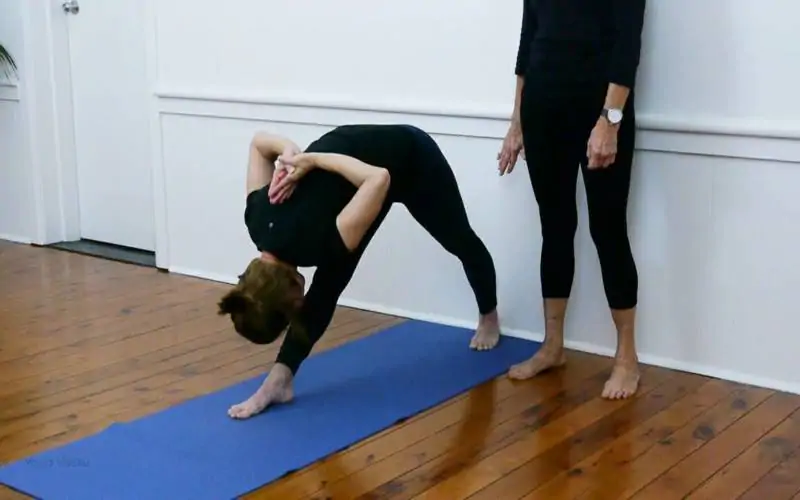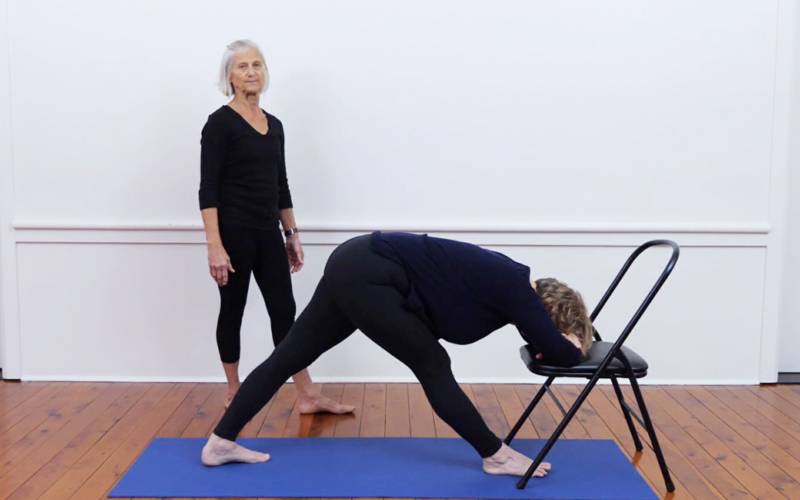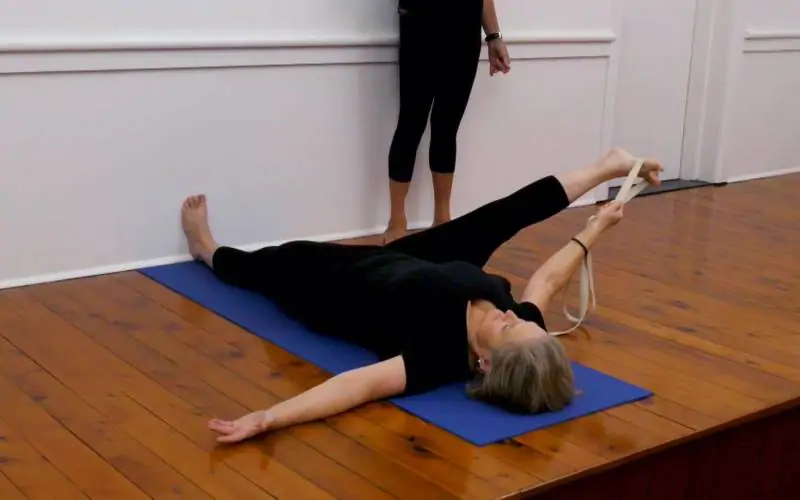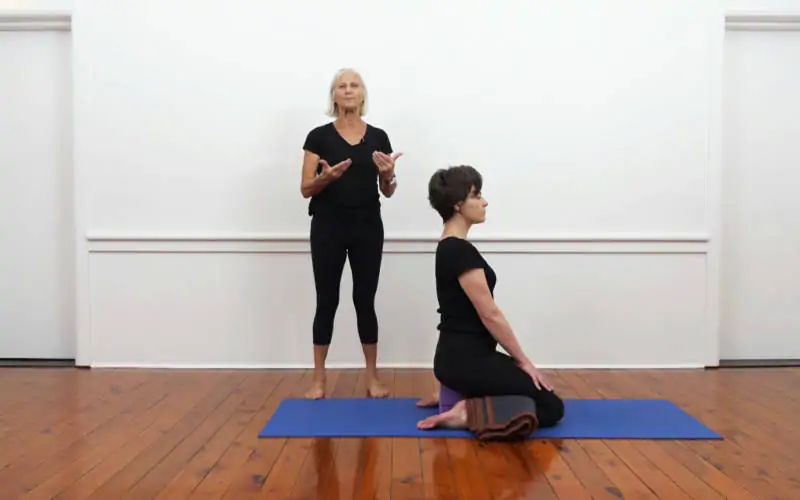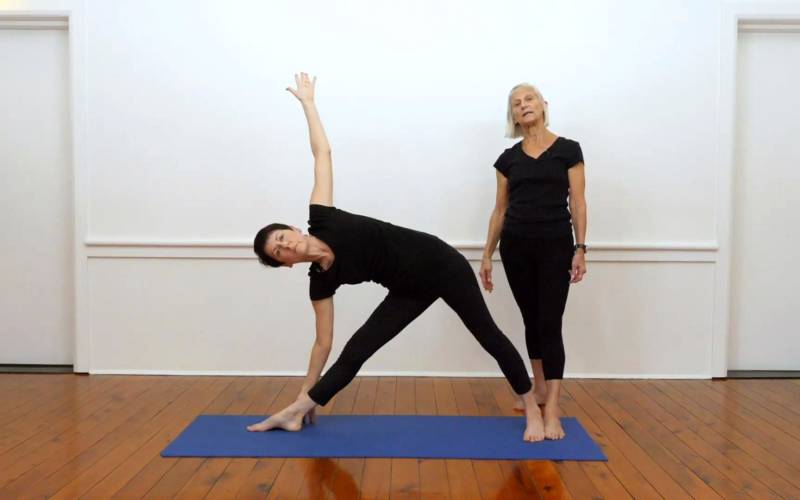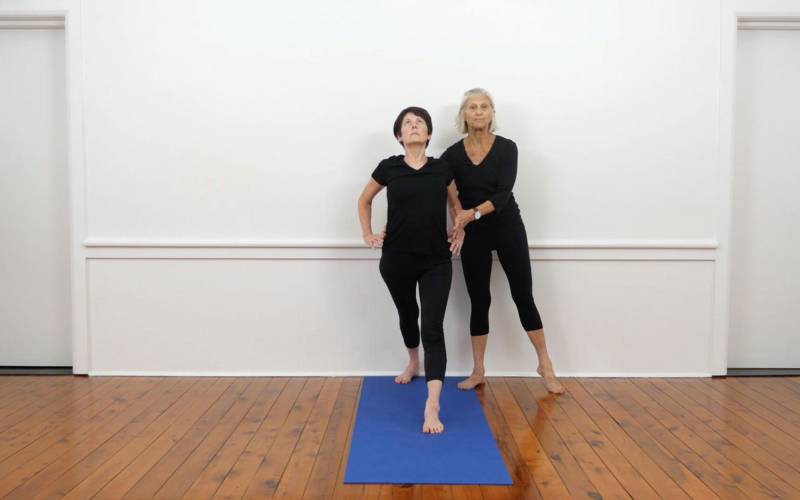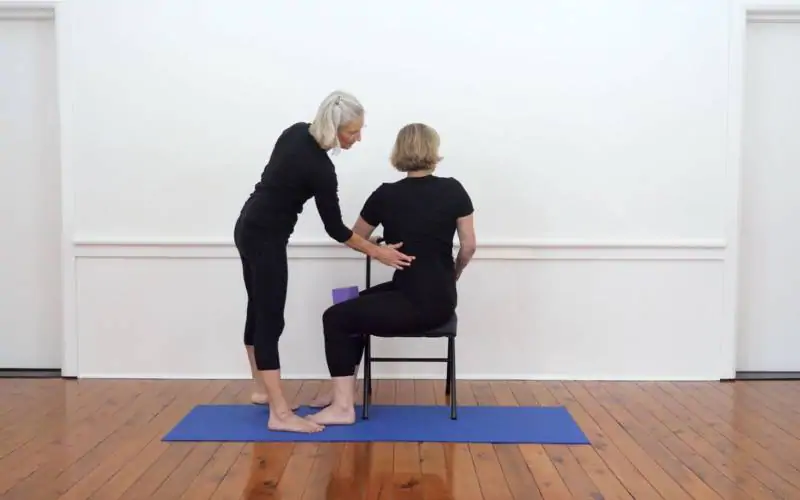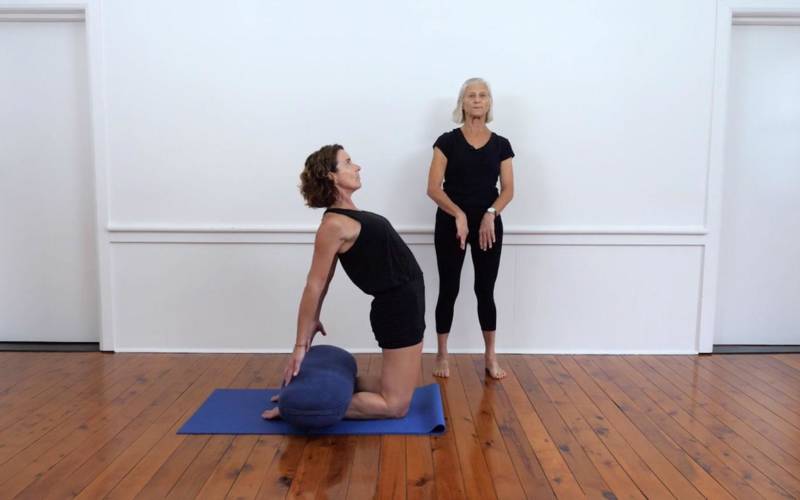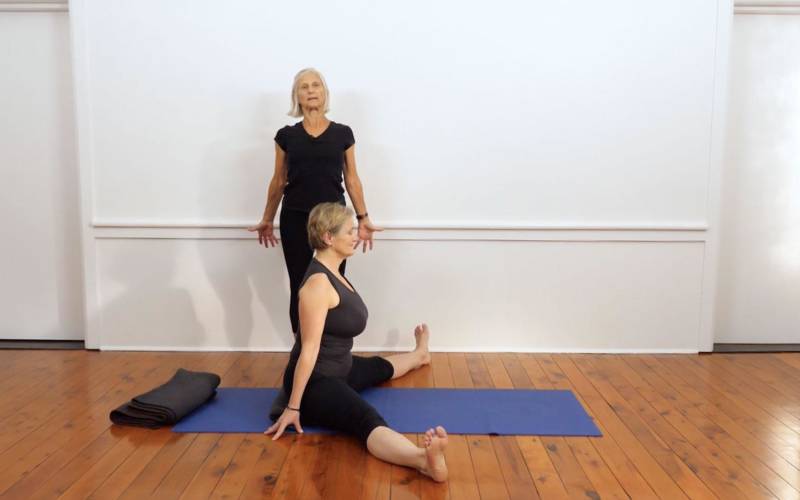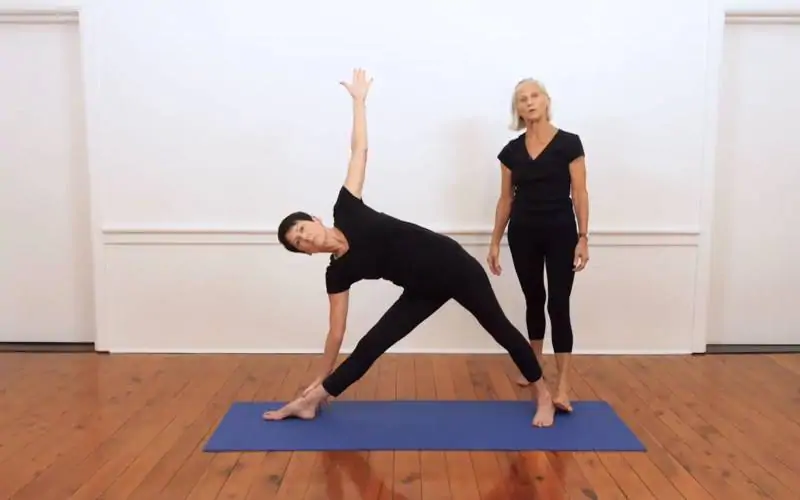How to perform Pyramid Pose
Place your feet one leg-length apart, your back foot angled out slightly. Keep your legs straight as you start to fold over your front leg, maintaining a concave spine for as far into the bend as possible.
What is Parsvottanasana?
This split-legged standing pose gives a great opening to the backs of the legs, lengthens the spine, and also removes stiffness from the neck, shoulders, and elbows.
The pose can be learnt in a number of stages: first, concave spine; then later taking the hands down, and the head down; and then finally the full pose with the body lengthening along the straight front leg and the hands in Reverse Prayer, Paschima Namaskarasana.
When to use Parsvottanasana?
Regular practice of Parsvottasana is said to stimulate and benefit the kidneys, via its effect on the lower back band and pelvic-rim area. It cools the brain, is soothing to the nerves, and improves digestion. The liver and spleen become toned. In the legs, the front leg receives a deep stretch of the hamstring, and the back leg benefits from calf and achilles tendon stretch.
It is one of the standing forward bends which help to show how, when the legs are firmly engaged, the spine can release more in the forward action. Taking the trunk forward and down helps bring rest to the heart and quietens the mind after an strenuous session.
For some students, the reverse-prayer action of the hands may be inaccessible at first. One option is to hold the elbows behind the back while the pose is first being learnt.
